#2018ToyotaCamry
2018 Toyota Camry XLE V6 Review - The Default Choice for a Reason
It happened again. A neighbor, a casual acquaintance at best, messaged me on Facebook, asking for a used car recommendation. As usual, I suspect they were trying to get me to literally point them to a specific car for sale, but I’ve been roped into enough third-party late-night Craigslist-and-Cars.com binges to bite this time.
“Just buy the best Camry you can afford,” was my reply. I’ve given the same advice before to plenty of other non-enthusiasts, those for whom a car is merely an appliance. While I can easily rattle dozens of interesting choices to someone properly invested in driving enjoyment, I’d rather avoid the repercussions of recommending a 10-year-old M3 to a suburban mom who wants nothing more than a hassle-free commute.
Toyota pulled the cover off of the newest Camry in Detroit last year, and the rakish new styling has been flooding the streets ever since. Tim tested the four-cylinder model a few weeks back, but he wished for a bit more power. Fortunately, the gods of horsepower and displacement smiled upon me, and delivered upon my driveway this 2018 Toyota Camry XLE with the big V6.
Does the redesign tick the default box for enthusiasts, too?
2018 Toyota Camry XLE - Jack of All Trades
Complete the last part of the phrase in the headline up there. Yeah, it’s “master of none.” Thing is, that doesn’t apply to the 2018 Toyota Camry – it really is a jack of all trades, and it even masters at least some.
Fight it we might, but most automotive journalists, or at least most of us who grew up as enthusiasts, have biases. One of mine has been to rag on the Camry, dismissing it like so many others as a boring and beige (figuratively, not literally) commuter sleigh.
Toyota was listening, and every generation got a bit better, even if the driving dynamics part of the equation was still lacking compared to some of the competition.
Well, now that part is finally on par.
Midsize Sedan Deathwatch #16: The Decline of the Midsize Class's Middle Class
Ever more minor midsize players continued to see their share of America’s midsize sedan segment dwindle in September 2017. The cause: domination on the part of America’s two major midsize cars.
The all-new 2018 Toyota Camry enjoyed its first full month of meaningful availability in September and produced a 13-percent year-over-year U.S. sales improvement as a result. Meanwhile, Honda is clearing out remaining 2017 Accords in advance of the all-new 2018 Accord’s arrival this fall. Honda’s efforts produced a 10-percent uptick compared with September 2016.
Yet despite the big gains from the two major players, the upper class, the midsize segment still declined 7 percent in September because of sharp declines by many members of the middle class.
That means Camry and Accord market share continues to rise. That means the slice of the market earned by the middle class continues to shrink.
Honda Wanted 2018 Accord to Top Midsize Class in Fuel Economy - It Does No Such Thing
From a historical midsize perspective, the all-new 2018 Honda Accord is rather thrifty with the Earth’s decreasing supply of oil.
It’s fuel efficient, in other words. Over the span of 10,000 highway miles, the basic 2018 Honda Accord is expected to consume 263 gallons of regular octane gasoline. That’s only 13 more gallons than you’ll consume in a 2018 Honda Civic Hatchback with the same 1.5-liter turbocharged four-cylinder. It’s 15 fewer gallons than you’d have used in the most efficient non-hybrid 2017 Honda Accord.
The city improvement is more meaningful. The 2017 Honda Accord four-cylinder topped out at 27 mpg in the city, equal to $944 for 10,000 miles at the current fuel price of $2.55/gallon. The new 30-mpg Accord reduces city consumption in the same scenario to $850, a 10-percent decrease.
The 2018 Honda Accord is not, however, the most fuel-efficient car in America’s midsize sedan category. Honda thought it would be. Honda was wrong.
Primed to End the Toyota Camry's 15-Year Run, Honda Does Not Mess With 2018 Civic's Recipe
George W. Bush was finishing his second year as president of the United States when Toyota reported 434,145 Camry sales in calendar year 2002. No other passenger car generated more U.S. volume that year.
Or the next year. Or the next. Or the one after that. In fact, the Toyota Camry’s reign as America’s best-selling car continued for a decade and a half, stretching from 2002 through 2016.
Unless the launch of the all-new 2018 Toyota Camry results in a superior final third of 2017, however, Toyota’s tenure atop the leaderboard will end this year. Ahead of the Camry by 1,153 sales through the first eight months of 2017 is the Honda Civic.
With 2018 Civics arriving in Honda showrooms on October 3, 2017, Honda is determined to leave well enough alone. The recipe is unchanged. Honda will not mess with success.
That Powerful New Four-Cylinder 2018 Toyota Camry? It's Not That Quick
Your excitement knows just cause. Upon reporting that the 2018 Toyota Camry would feature the American midsize segment’s most powerful base engine, the masses descended. We could see the hair standing up on the back of your neck through the series of tubes that is the internet.
In the 2018 Toyota Camry L, LE, SE, and XLE trims, the Camry’s new 2.5-liter four-cylinder produces 203 horsepower and 184 lb-ft of torque, at 6,600 and 5,000 rpm, respectively. In the 2018 Toyota Camry XSE, however, the Dynamic Force 2.5-liter produces — wait for it — 206 horsepower and 186 lb-ft of torque, gains of three ponies and two lb-ft.
So what do those major power gains, up from 178 horses and 170 lb-ft in the 2017 Camry, get the owner of the new 2018 Toyota Camry?
2018 Toyota Camry SE Rental Review - Three Dressed Up As a Nine?
It has been one of automotive history’s great rivalries and, like many such contests throughout history, it’s always been a bit more one-sided than we would like to remember.
In 1982, the Toyota Camry arrived on these shores to do battle against the newly revised second-generation Honda Accord. Their rivals have come and gone, changing names and market positions, but the Camry and Accord have marched in neat lockstep through seven generations. During most of the past 35 model years the Toyota has managed to outsell the Honda, often through the black magic of fleet sales but sometimes just due to consumer preference. Yet this sales supremacy hasn’t been matched by critical acclaim. With just one exception — the stunning “XV10” Camry of 1992 — the autowriters, autocrossers, and auto-didact auto-enthusiasts have always preferred the Accord.
Did I say there was one exception? For me, there have been two. When I rented an XV50 (2012-2017) Camry SE for the first time, I expected to find yet another ho-hum family hauler with delusions of monochrome sporting grandeur. To my immense surprise and delight, I discovered that this light and lithe minimalist wedge was actually absolutely brilliant both on and off the racetrack. 2012 was the final year for the bloated and joyless eighth-gen Accord and I felt that the new Toyota easily surpassed it in virtually all respects. This was a short-lived victory, to say the least. The 2013 Accord might not have quite matched its crosstown competition in terms of chassis dynamics, but it offered a more boutique-feeling experience with the further enthusiast incentive of a clutch pedal.
Five years of playing second fiddle later, Toyota has a new Camry SE once more. This car boasts class-leading power, massively aggressive looks, and a price that re-emphasizes the company’s desire for sales leadership away from the fleets. On paper at least, it’s a significant improvement over the old car. The only problem is that Honda has a new Accord on the way. It’s the ninth round of this battle. Can Toyota win, either on points or through a clean 1992-style knockout?
After five hundred miles with a fresh-to-the-fleet Camry SE, I’m saddened to report that things don’t look good for the challenger from Kentucky. Far from being a pre-emptive strike against next year’s Accord, this new Toyota finds itself unable to even land a decisive punch on the half-decade-old Honda that’s slowly draining from showroom inventories as we speak.
Midsize Sedan Deathwatch #15: Toyota Camry Proves to Be a Killer In August 2017
The launch of the all-new 2018 Toyota Camry began in July 2017 and delivered a big boost to America’s best-selling midsize car in August 2017.
As its competitors combined for a 12-percent loss valued at nearly 16,000 fewer sales than in August 2016, Toyota Camry sales jumped 13 percent, a gain of 4,187 sales. That figure includes 6,805 new-gen Camrys imported from Japan, where the Camry’s home market factory is being relied upon while Toyota’s Georgetown, Kentucky, assembly plant gathers steam for the entirely different Toyota New Global Architecture.
With falling sales across much of the category and rising volume at the top seller, Toyota got exactly what it called for in August 2017: a huge market share increase. But did the Camry provide the rumored boost to the segment overall? Quite clearly no, not yet.
2018 Toyota Camry Hybrid First Drive - Who Needs a Prius?
As part of a larger group of automotive publications, TTAC has access to a variety of content. We wanted to bring you some of the unique content we think lives up to TTAC’s standards and offers legitimate insight or a properly critical viewpoint to car evaluation. This story, by Hybrid Cars author Evan Williams, showcases the 2018 Toyota Camry Hybrid.
Toyota’s replacement for its popular hybrid sedan – sales of which have been falling off this year – comes along with the thorough overhaul of its entire Camry line. After years of cars that were reliable, efficient, and perceived by some to be boring, Toyota wants the new model to be reliable, efficient, and fun to drive. No, really.
Toyota is selling the new Camry as being an emotional choice, not just a rational one. Chief Engineer Masato Katsumata called it “visceral.” A strong word for a family sedan.
Don't Be so Quick to Pull the Trigger on That 2018 Toyota Camry - 2017s Are Cheap and Abundant
The 2018 Toyota Camry is the first truly, completely, all-new Toyota Camry since 2002. Built on Toyota’s New Global Architecture, it’s stiffer, safer, and by all accounts, substantially better to drive than the 2017.
Fuel efficiency took a leap forward. Horsepower did, too. The feature count, including the safety department, was elevated. The 2018 Toyota Camry even has a sense of style, whether you like its sense or prefer less offensive past examples.
With an all-new architecture for an in-demand car — yes, even as sedans slow, the Camry is still the 15-time best-selling car in America — comes a lack of willingness on the part of Toyota to deal. That’s made all the more true by the current cost of importing Camrys. While production will eventually be in full swing at the Camry’s Georgetown, Kentucky, assembly plant, early copies of the 2018 Camry hail from Japan.
Rare will be the buyer who heads into a U.S. Toyota store this Labor Day weekend with a strong preference for the old Camry, still available in abundance on dealer lots. Even with concerns (albeit modest concerns; this is a Camry) regarding first-model-year reliability, the MY2018 Camry is the bright and shiny object.
The 2018 Toyota Camry is better than the 2017 Toyota Camry: objectively, subjectively, on paper, on the road. But is it 41-percent better?
QOTD: Camry Now Or Accord Later?
By the time the all-new 2018 Honda Accord debuted at a July 14, 2017, launch event, the all-new 2018 Toyota Camry was already on sale.
There are still sedan buyers alive in this world, you see. You might just be among them. Toyota and Honda will sell some 700,000 Camrys and Accords in the United States in 2017, roughly four out of every 10 midsize cars.
So, presented with two new options from the preeminent manufacturers of midsize sedans, what choice do you make? A 2018 Toyota Camry right now, with all the glory of a J-VIN and a 301-horsepower V6? Or do you wait a few weeks for the 2018 Honda Accord, a sports sedan on the cheap with a 2.0T and a six-speed manual?
QOTD: Would You Buy a Car in Its First Model Year?
There are a large number of major new vehicle introductions happening in the United States in 2017.
The all-new 2018 Toyota Camry is arriving at dealers as we speak. The all-new 2018 Honda Accord is weeks away. Ford’s 2018 F-150 revamp is a thorough mid-cycle update. The Kia Niro, a unique Toyota Prius alternative, arrived early this year. Mazda brought a new bodystyle to the MX-5 Miata in RF trim. The Subaru Crosstrek, quickly becoming a mainstream compact car option, is new for 2018. The Alfa Romeo rebirth continues with the Giulia, still ramping up, and the arriving-now Stelvio. The all-electric Chevrolet Bolt arrived in late December, as did a new version of America’s historic best-selling utility vehicle, the Honda CR-V. The list goes on: Tesla Model 3, Jeep Compass, Ford Expedition, Land Rover Discovery, Lexus LC, Toyota C-HR, Volkswagen Atlas, Volvo XC60.
And, thank our lucky stars, we can’t forget the early summer arrival of Honda’s fifth-generation Odyssey.
New engines, new transmissions, new wiring harnesses, new technology, new roof-folding mechanisms, new Italians. Is it just too much… new everything? Would you buy any of these vehicles in 2017, or is it best to wait until the second model year?
All of the New 2018 Toyota Camrys Sold in America in July Were Japan Imports
We learned early in July that many of the early 2018 Toyota Camrys available in Toyota’s U.S. showrooms wouldn’t be built in Toyota’s Georgetown, Kentucky, assembly plant.
Through June, not a single one of the 2016 and 2017 Camrys sold in America were imported. But all of the 2018 Toyota Camrys sold in July came across the Pacific from Japan.
Granted, most of the Camrys leaving Toyota showrooms are still old new Camrys, not new new Camrys.
Don't Go All Hybrid/Turbo/Electric/Fuel Cell Just Yet - Toyota V6 And V8 to Gain "Dynamic Force" Camry Engine Tech
Forget hybrids. Set aside, for this moment, plug-in hybrids as well. Ignore the EV hubbub and the pie-in-the-sky hydrogen fuel cells. While you’re at it, remove turbochargers and their accompanying displacement reductions from your memory, too.
The naturally aspirated internal combustion engine has legs. The proof is in the 2018 Toyota Camry’s 2.5-liter Dynamic Force four-cylinder. With no hybrid assist, no turbos, no cord that plugs into your garage wall, and no futuristic fuel source, the new Camry 2.5-liter produces 206 horsepower and hits 41 miles per gallon on the highway on regular 87 octane.
That’s 16-percent more power 24-percent more highway mpg than the 2017 Camry’s 2.5-liter four-cylinder. With improvements in conventional, naturally aspirated, gas-fired engines occurring in such leaps and bounds, it’s no wonder Toyota has bigger plans for the Dynamic Force blueprint.
Toyota Sees All Upside for 2018 Camry If Rivals Decide to Focus Purely on SUVs
As Toyota watches its RAV4 quickly climb sales charts, the Japanese behemoth estimates it will sell fewer copies of its new-for-2018 eighth-generation Camry than it has in six years.
According to Reuters, Toyota is targeting 30,000 monthly Camry sales in the U.S. once the 2018 model fully takes over. That’s 360,000 Camry sales per year, well below the 412,000-unit average Toyota has managed over the last half-decade; 7-percent below last year’s output.
Toyota considers the thought of overall midsize sedan demise “inconceivable” but is by no means blind to the segment’s evolution. Recent deaths, such as the Chrysler 200 and Dodge Avenger, followed the disappearance of the Mitsubishi Galant, Suzuki Kizashi, and domestic nameplate removals, as well. Remember the Mercury Milan, Pontiac G6, and Saturn Aura?
But as the midsize segment struggles, Toyota looks down from its lofty perch and sees the odds increasingly turning in the Camry’s favor. “If other automakers left the sedan market to focus more on SUVs,” Camry chief engineer Masato Katsumata says, “that would be an opportunity to expand our market share of the segment.”





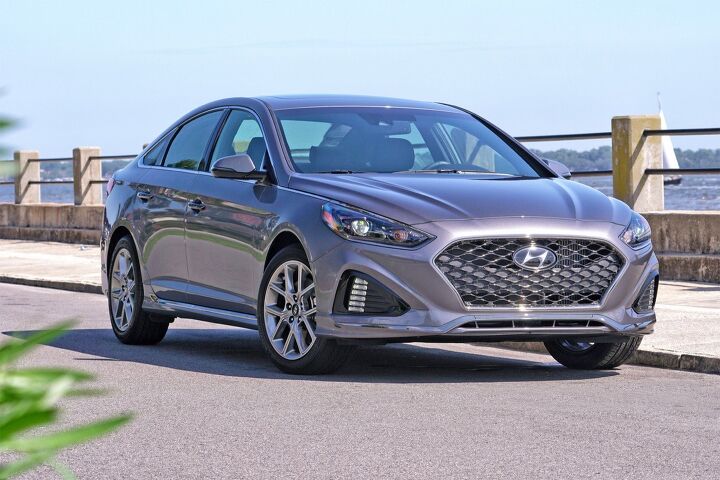
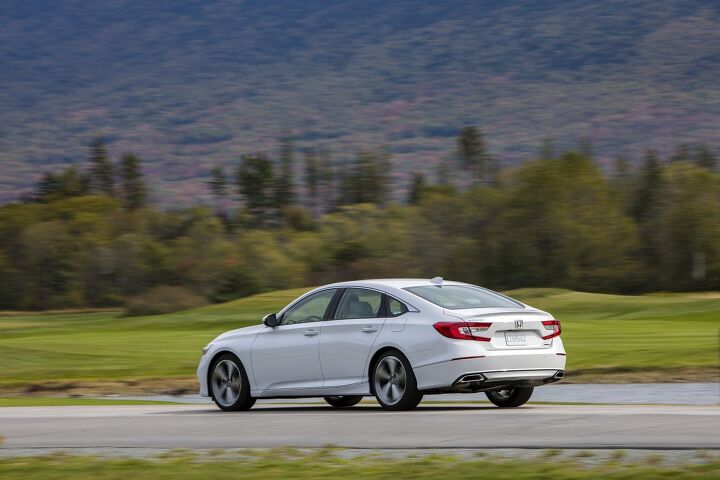


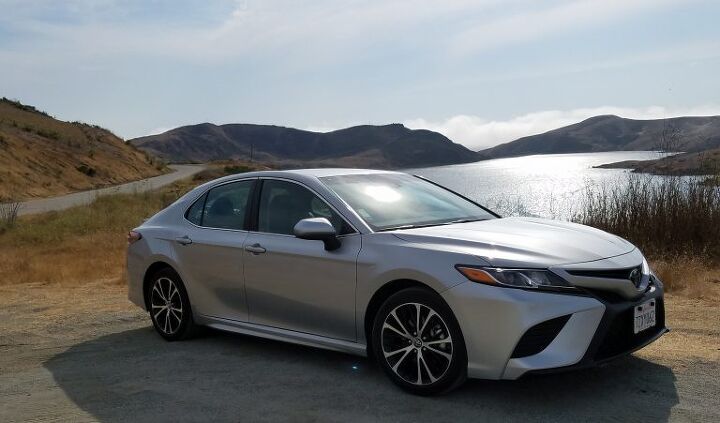

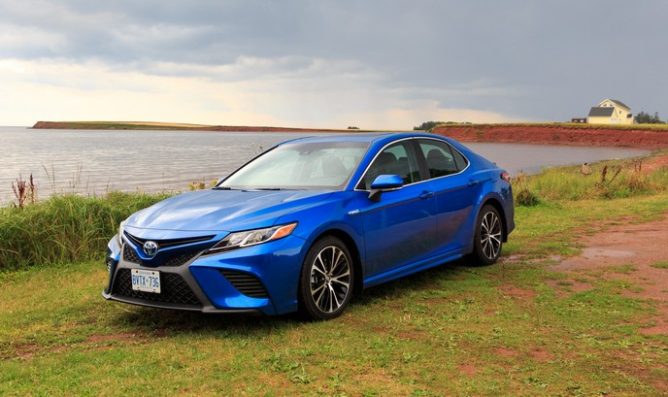


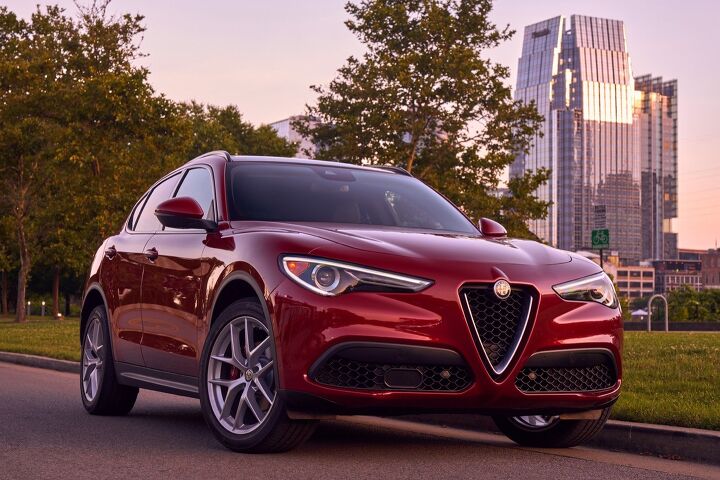
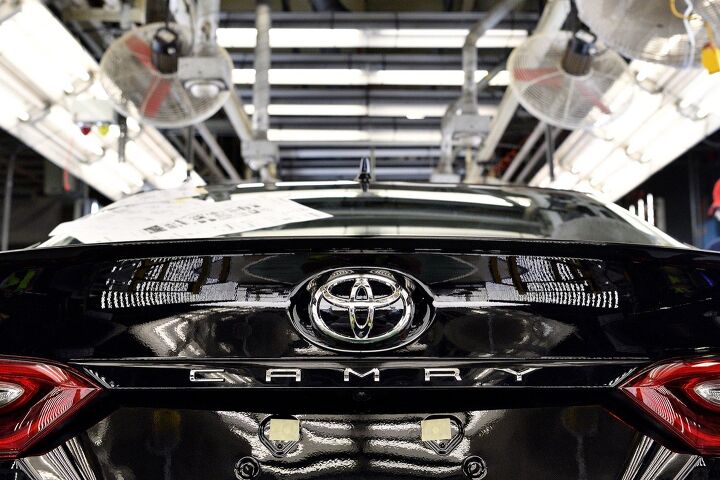














Recent Comments